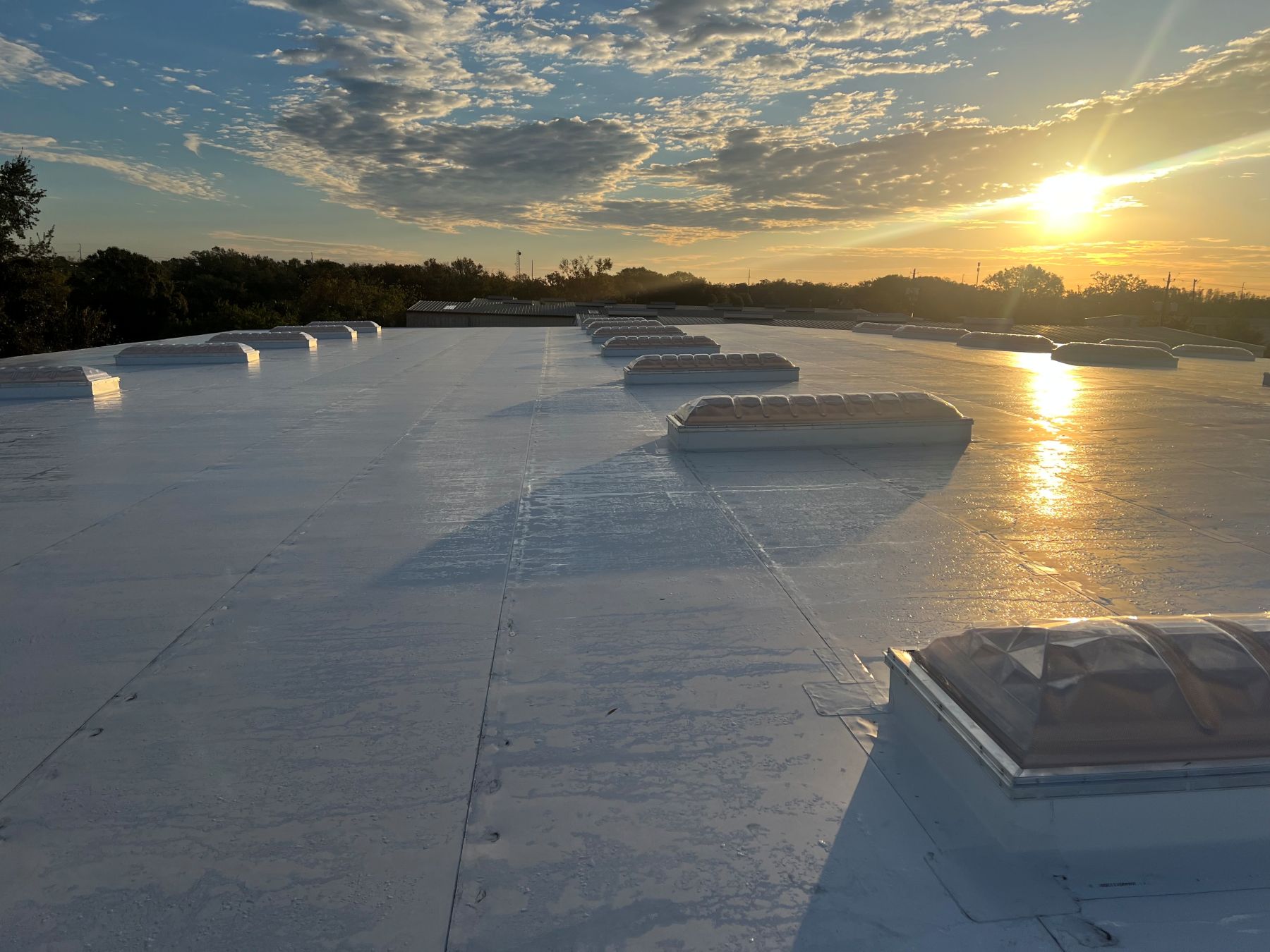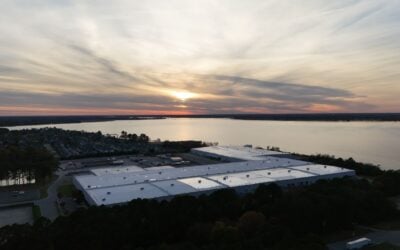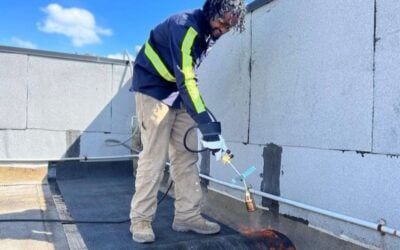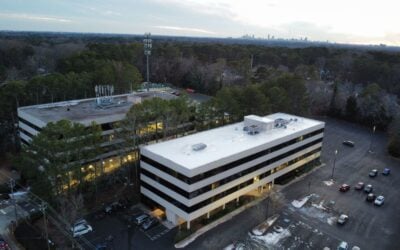Choosing the right roofing material for a commercial building is a critical decision. A roof is more than just a protective barrier against the elements; it plays a crucial role in the overall performance, aesthetics, and energy efficiency of the building. With so many roofing materials available, it can be overwhelming to determine which one is best for your business. To help guide you in your decision-making process, here are the top five commercial roofing materials and their unique benefits.
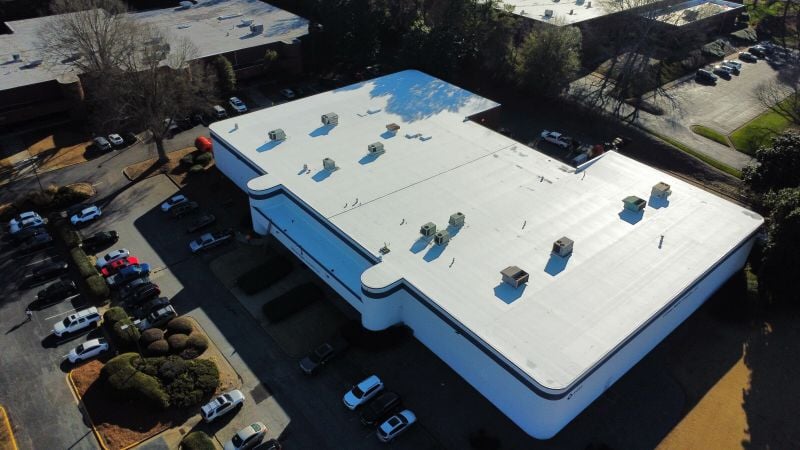
1. TPO (Thermoplastic Olefin)
TPO roofing has quickly become one of the most popular choices for commercial buildings. This single-ply membrane system is known for its durability, energy efficiency, and cost-effectiveness. TPO roofing is made from a blend of polypropylene and ethylene-propylene rubber, which gives it excellent resistance to UV rays, ozone, and chemicals.
Benefits:
Energy Efficiency: TPO is a reflective material, meaning it reflects the sun’s heat away from the building, helping to keep cooling costs down. This is particularly beneficial in warmer climates, as it can significantly reduce the energy bills of a commercial property.
Durability: TPO roofing is highly resistant to punctures, tears, and impacts, ensuring it can withstand extreme weather conditions like hail, rain, and snow.
Cost-Effective: Compared to other roofing materials, TPO is relatively affordable and offers long-term value through energy savings and low maintenance costs.
2. EPDM (Ethylene Propylene Diene Monomer)
EPDM is another single-ply membrane roofing material that has been widely used in commercial roofing for decades. It is made from a synthetic rubber compound and is known for its impressive weather resistance, especially in harsh environments. EPDM is available in both black and white varieties, with white offering additional energy efficiency benefits.
Benefits:
Longevity: EPDM roofing systems are known for their long lifespan, often lasting 30 years or more with proper maintenance. This makes it a great investment for commercial property owners looking for a roof that will stand the test of time.
Waterproofing: EPDM is highly resistant to water, making it an excellent choice for buildings in regions prone to heavy rainfall.
Low Maintenance: Once installed, EPDM roofs require minimal maintenance. Routine inspections and occasional cleaning are usually enough to keep it in top condition.
Flexibility: EPDM is highly flexible and can expand or contract with temperature fluctuations without cracking or splitting, making it ideal for buildings in areas with extreme temperature variations.
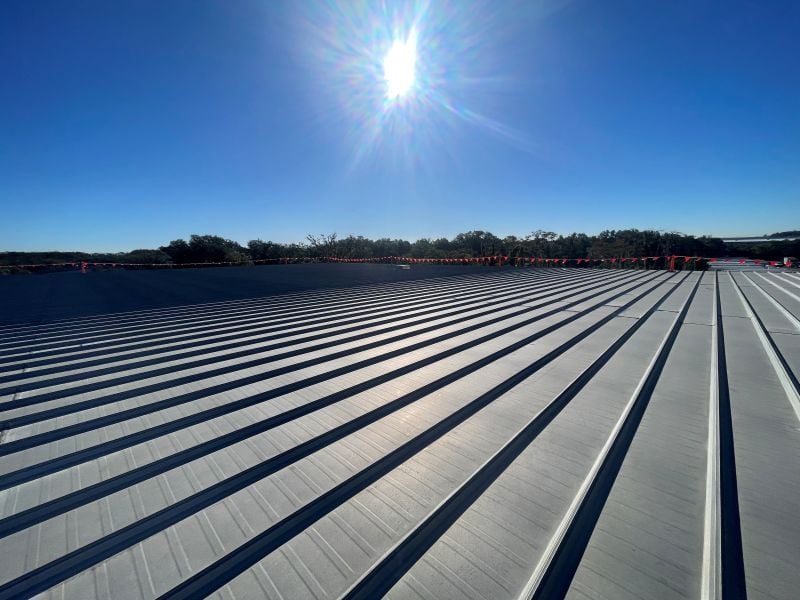
Modified bitumen is a popular commercial roofing material that combines the best qualities of asphalt with advanced polymer additives. This material is applied in multiple layers and is typically installed using either heat or cold adhesives. Modified bitumen roofing is commonly used in low-slope roofing systems, though it can be adapted for sloped roofs as well.
Benefits:
Strong and Durable: Modified bitumen is highly resistant to physical damage, such as punctures and tears. Its multi-layer construction ensures that the roof remains intact even in harsh conditions.
Weather Resistance: This material provides excellent protection against the elements, including UV radiation, rain, snow, and wind. It also offers resistance to algae and mold growth.
Easy to Repair: If damage occurs, repairs to modified bitumen roofing are relatively straightforward and inexpensive.
Versatility: Modified bitumen comes in a variety of colors and finishes, allowing building owners to choose a style that complements the overall aesthetics of the building.
4. Metal Roofing
Metal roofing is an extremely durable and energy-efficient option for commercial buildings. Metal roofs are made from a variety of materials, including steel, aluminum, and copper, and can be installed in panels. The reflective properties of metal roofing materials make it a top choice for building owners looking to reduce energy costs.
Benefits:
Durability: Metal roofs are incredibly strong and can withstand extreme weather conditions, including high winds, heavy snowfall, and hail. They are also resistant to rust, corrosion, and fire.
Energy Efficiency: Metal roofs reflect heat, which can reduce the need for air conditioning in the summer months. This can significantly lower energy bills and improve the building’s overall energy efficiency.
Longevity: Metal roofing systems are among the longest-lasting options, with some systems lasting 50 years or more.
Low Maintenance: Metal roofs require little maintenance compared to other roofing materials. Cleaning gutters and inspecting the roof for damage are typically the extent of required care.
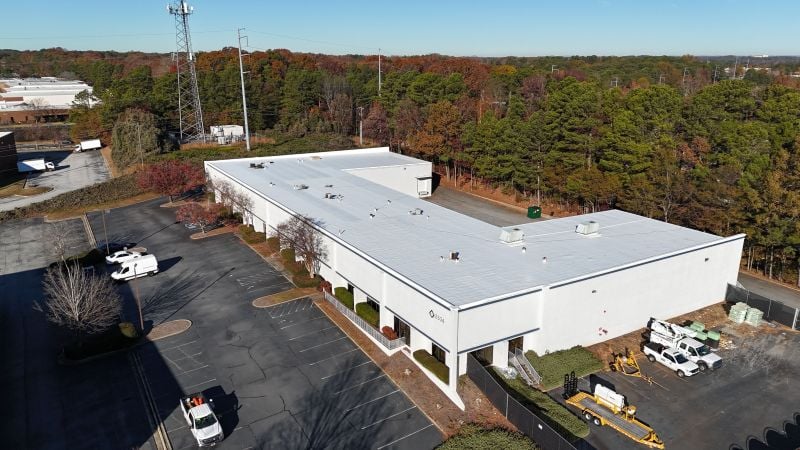
5. Green Roofing (Living Roofs)
Green roofing, or living roofs, are a unique and eco-friendly option for commercial buildings. This system involves planting vegetation on top of a waterproof membrane, creating a rooftop garden or green space. Green roofs are not only visually appealing but also offer numerous environmental benefits.
Benefits:
Environmental Benefits: Green roofs help reduce the urban heat island effect by absorbing sunlight and providing insulation. They also improve air quality by filtering pollutants and capturing carbon dioxide.
Energy Efficiency: The vegetation on a green roof acts as natural insulation, helping to regulate indoor temperatures and reduce the need for heating and cooling.
Stormwater Management: Green roofs can absorb and manage rainwater, reducing the amount of runoff that contributes to flooding and water pollution.
Aesthetic Appeal: Green roofs can enhance the overall appearance of a commercial building and provide valuable green space in urban environments.
Conclusion
Choosing the right roofing material for your commercial building depends on several factors, including budget, climate, energy efficiency goals, and aesthetic preferences. TPO, EPDM, modified bitumen, metal, and green roofing all offer unique benefits that make them suitable for various commercial applications. When selecting a roofing system, be sure to consult with a professional roofing contractor to determine the best option for your specific needs. Investing in a high-quality roofing material can significantly improve the longevity, performance, and energy efficiency of your commercial building.

